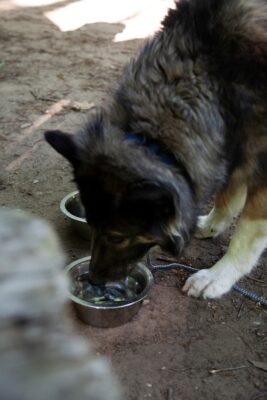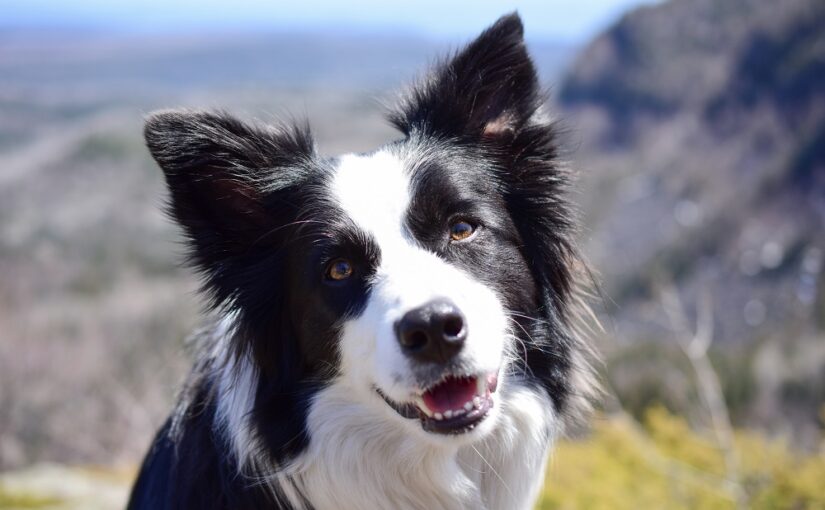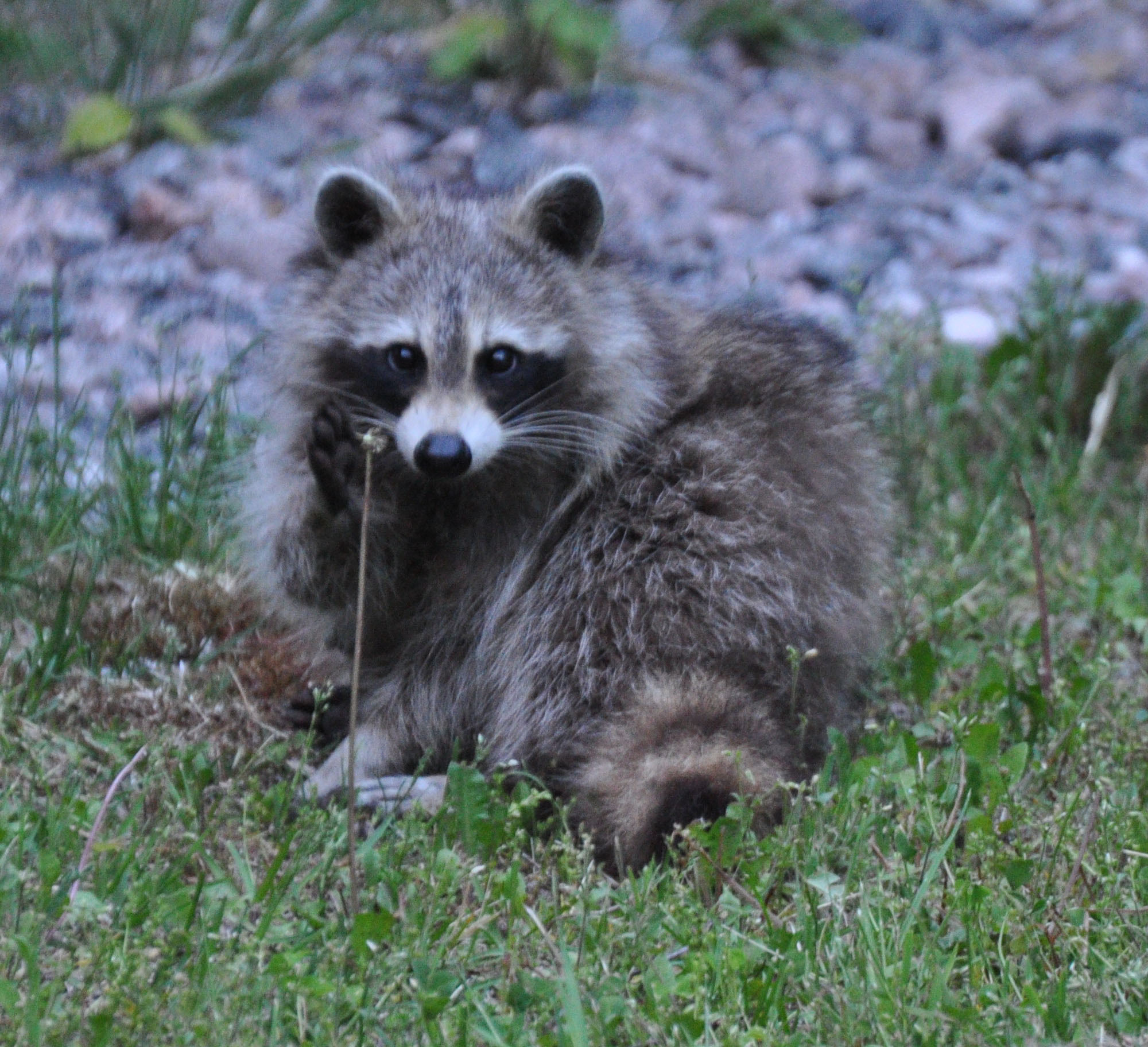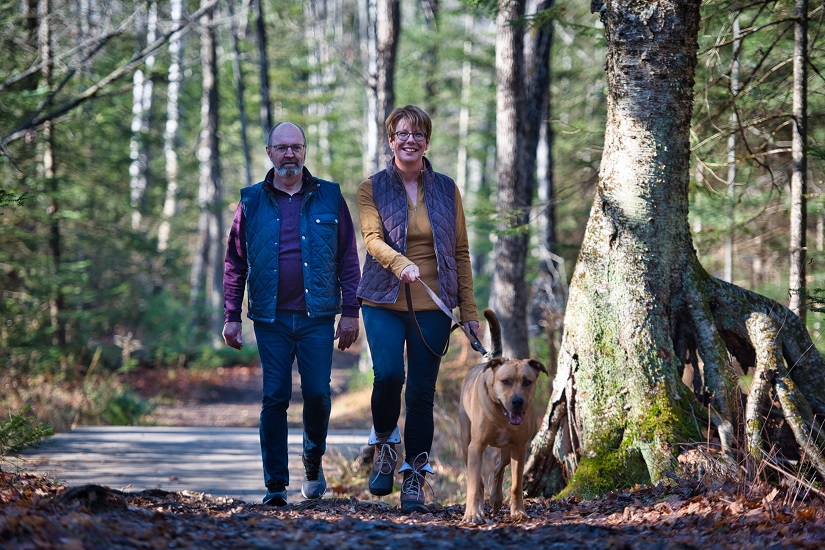Part of being a good pet owner and park visitor is cleaning up after your dog.
“Stoop and scoop” is a phrase all pet owners have heard for decades, yet park staff are often asked, “Why do I need to pick up after my dog when wildlife poop does not need to be picked up?”
It’s a good question. How is dog poop different from raccoon, coyote, moose or even bear scat?
As it turns out, not all scat is the same.
Everything in moderation — including scat!

Wild animals consume food that is produced within their ecosystems.
Once digested, the nutrients are then returned to the ecosystem.
The waste is produced in small enough amounts that decomposers are able to continue the component nutrients’ paths through the carbon, nitrogen, and phosphorus cycles.
Wildlife scat also plays an important role in dispersing native plant seeds.
Compare this to dogs, who are usually fed a diet of store bought foods that are very high in nutrients.
When your dog poops in the park, or anywhere for that matter, they are leaving behind waste with high quantities of nitrogen and phosphorus that can cause ecosystem-level problems. [1]
In most parks, our well-cared-for companions are present in much higher numbers than wild canid populations, and produce more waste than decomposers can keep up with.
Extra nutrients can create conditions where invasive plant species find it easier to grow and thrive, and decrease overall biodiversity. [2][3]
Ugly, smelly, and dangerous
It’s unpleasant to walk in a park with piles of poop carelessly left behind for others to see, smell, or step in.
But even beyond poor aesthetics, dog poop creates health hazards for humans, wildlife, and other dogs.
Dog poop is a source of parasites, bacteria, and viruses. These include E. coli, Giardia, Salmonella, roundworm, and tapeworms. [4][5][6][7] In most cases our pets are not regularly tested for these organisms, and you cannot be sure that your dog is not a disease vector.
Roundworms are a particular problem for wildlife. Roundworm eggs can persist in the soil for years, which means a single neglected scat can infect wildlife for a very long time. [8]
Thankfully, there is an easy solution!
Dogs arrive at our parks with their capable human companions.
When visiting a park with your pet, picking up your dog’s waste is required.
(Hanging it in a tree does not count!)
If you’re in the backcountry with no waste receptacles nearby, please treat your dog’s waste as you would human waste.
If an outdoor privy is not available, deposit solid waste in small holes dug 15 to 20 centimeters deep, at least 30 metres from water, campsites, and trails. Replace the soil immediately.
Make sure your dog is a park protection pooch
One neglectful dog owner in one park would not create many problems.
However, our parks are popular dog-friendly destinations. Thousands of small problems combine to create several big ones.
Ontario is home to millions of pet dogs. Those dogs produce an enormous amount of poop every day, and some of this excrement ends up in our protected areas.
That’s a lot of nutrients, pathogens, and unsightly mess. It is essential for all pet owners to do their part.
Together, we can keep our parks forever protected.
[1] De Frenne, P., M. Cougnon, G.P.J. Janssens, and P. Vangansbeke. 2022. Nutrient fertilization by dogs in peri-urban ecosystems. Ecological Solutions and Evidence 3(1). https://besjournals.onlinelibrary.wiley.com/doi/10.1002/2688-8319.12128
[2] Tilman, D. 1987. Secondary succession and the pattern of plant dominance along experimental nitrogen gradients. Ecological Monographs 57(3): 189-214. www.jstor.org/stable/2937080
[3] Bobbink, R., K. Hicks, J. Galloway, T. Spranger, R. Alkemande, M. Ashmore, M. Bustamante, S. Cinderby, E. Davidson, F. Dentener, B. Emmett, J-W. Erisman, M. Fenn, F. Gilliam, A. Nordin, L. Pardo, W. De Vries. 2010. Global assessment of nitrogen deposition effects on terrestrial plant diversity: a synthesis. Ecological Applications 20(1): 30-59. esajournals.onlinelibrary.wiley.com/doi/pdfdirect/10.1890/08-1140.1?casa_token=RRoP8G0iGXgAAAAA:c2nPjDZ8yMK9SR8E_kRg7oJ0bOZJv5bGmuKvz5VXIxi18MBv2d-qPTVJuoqqUUalLOW983J5fz9TJlg
[4] Lafferty, K.D. and L.R. Gerber. 2002. Good medicine for conservation biology: the intersection of epidemiology and conservation theory. Conservation Biology 16(3): 593-604. http://conbio.onlinelibrary.wiley.com/doi/full/10.1046/j.1523-1739.2002.00446.x#b24
[5] Wright, M.E., H.M. Solo-Gabriele, S. Elmir, and L.E. Fleming. 2009. Microbial Load from Animal feces at a recreational beach. Marine Pollution Bulletin 58(11): 1649-1656. www.ncbi.nlm.nih.gov/pmc/articles/PMC2771205/
[6] Bowers, R.M., A.P. Sullivan, E.K. Costello, J.L. Collett, R. Knight, and N. Fierer. 2011. Sources of bacteria in outdoor air across cities in the midwestern United States. American Society for Microbiology 77(18): 6350-6356. journals.asm.org/doi/pdf/10.1128/AEM.05498-11
[7] Ward., E. n.d. Giardia in dogs. VCA Animal Hospitals. vcacanada.com/know-your-pet/giardia-in-dogs
[8] Lynn, M.K., J.A. Morrissey and D.F. Conserve. 2021. Soil-transmitted helminths in the USA: a review of five common parasites and future directions for avenues of enhanced epidemiologic inquiry. Current Tropical Medicine Reports 8: 32-42. link.springer.com/article/10.1007/s40475-020-00221-2




